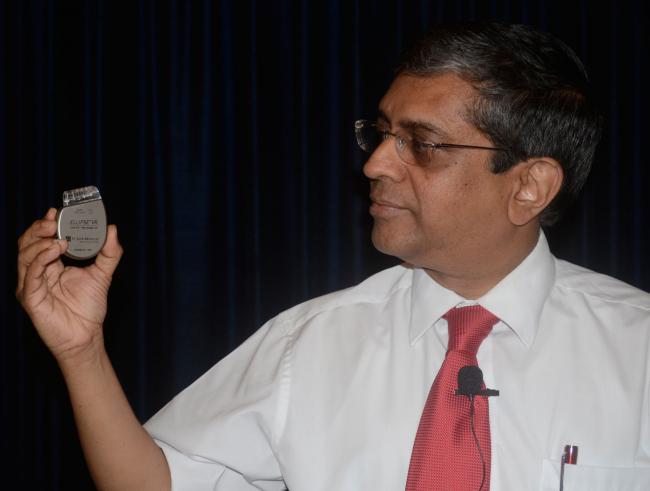
Kolkata doctor uses technology to prevent Sudden Cardiac Death (SCD)
Bannerjee, who implemented Eastern India’s first MRI compatible Implantable Cardioverter Defibrillator (ICD) on a female patient in July, earlier this year, spoke about the technology he used to prevent SCD.
“The ICD monitors the heart rate round the clock. It brings down the heart rate and can also get it up,” the doctor said.
“The MRI compatible ones are designed keeping in mind the need of the patient. If the device is not compatible, it might cause certain problem in the future.”
Global reports claim that 75 percent of the patients suffering from or have suffered a SCD are likely to go through a MRI scan.
When asked, how different is SCD from a normal cardiac arrest, Bannerjee said, “It is a bit different. There are three factors determining a SCD. One, it is very sudden. One moment you might feel uneasy and the very next moment you might suffer from it. The second is time and mode, it is unexpected. You might be alright without having a history of cardiac arrest and might still suffer from one, so it is independent of your medical conditions.”
“People with a history of heart related diseases are more likely to fall prey to SCD.”
The doctor further explained, “The flow of blood in the brain is reduced as the heart speed increases, causing a blackout and within minutes one can succumb to death. The time from the first symptom to the onset of the attack may last a couple of seconds, so one must act very swiftly.”
People with a history of drug and substance abuse are most likely to invoke Sudden Cardiac Death. Other possible factors are the thickening of heart muscles, or people born with an electrical defect.
The implementation cost ranges in between seven to seven and a half lakh rupees for the MRI compatible ICD and about five lakh rupees for the non MRI compatible model.
The device has a life span of a maximum of seven years, after which it can be replaced, which will cost around five lakh rupees for the MRI compatible model and about three lakh rupees for the non MRI compatible model.
When asked about the high cost of implementation, the doctor said, “The prices will come down when the number of implementation increases. The good part however is, ICD implementation has no recurring cost unlike dialysis. People go for dialysis, because it’s cheaper but seldom do they realize that they end up paying more for it.”
The doctor also mentioned that SCD is not fully curable; in fact reports suggest that a victim is 20 percent more likely to experience another attack after a year and the percentage increases to a 50 percent after three years.
“SCD cannot be cured fully, so one must try and prevent. I would advice someone with the condition to go for a yearly checkup. Consult a doctor.”
Bannerjee also expressed his disappointment at the lack of awareness of general public.
“There are so many cases I have personally come across in our country where a person died simply because he was not aware.”
The two most common quick therapies to prevent SCD are electric shock and CPR. He said, “Electric shock is the premier treatment, but for that the victim must be in a hospital where he can be administered shocks or in an ambulance equipped with such facilities. So the go to way would be to apply CPR.”
CPR (cardiopulmonary resuscitation) is a life saving technique that comprises of mouth to mouth respiration along with rhythmic presses on the heart of a person.
“We need more awareness; we need to be a lot more responsible. People should learn CPR; it might just make a difference between life and death.”
(Reporting by Sudipto Maity)
Support Our Journalism
We cannot do without you.. your contribution supports unbiased journalism
IBNS is not driven by any ism- not wokeism, not racism, not skewed secularism, not hyper right-wing or left liberal ideals, nor by any hardline religious beliefs or hyper nationalism. We want to serve you good old objective news, as they are. We do not judge or preach. We let people decide for themselves. We only try to present factual and well-sourced news.







